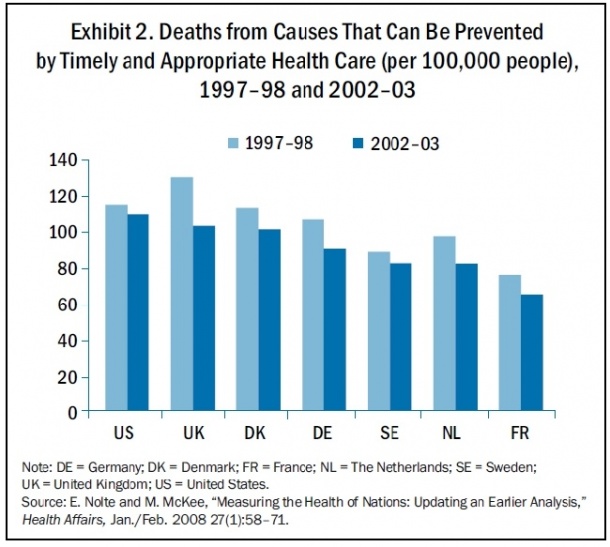A student as soon as disagreed with him and when Dr. Sigerist asked him to estimate his authority, the trainee shouted, "You yourself said so!" "When?" asked Dr. Sigerist. "Three years back," addressed the trainee. "Ah," said Dr. Sigerist, "three years is a long time. I have actually altered my mind since then." I guess for me this speaks to the altering tides of opinion which whatever is in flux and open to renegotiation.
Much of this talk was paraphrased/annotated straight from the sources listed below, in particular the work of Paul Starr: Bauman, Harold, "Bordering http://messiahcxrd744.xtgem.com/some%20of%20what%20are%20provider%20services%20in%20home%20health%20care On National Health Insurance Coverage considering that 1910" in Changing to National Healthcare: Ethical and Policy Issues (Vol. 4, Ethics in a Changing World) modified by Heufner, Robert P. and Margaret # P.
" Increase President's Strategy", Washington Post, p. A23, February 7, 1992. Brown, Ted. "Isaac Max Rubinow", (a biographical sketch), American Journal of Public Health, Vol. 87, No. 11, pp. 1863-1864, 1997 Danielson, David A., and Arthur Mazer. "The Massachusetts Referendum for a National Health Program", Journal of Public Health Policy, Summer Season 1986.
" The Home of Falk: The Paranoid Design in American Home Politics", American Journal of Public Health", Vol. 87, No. 11, pp. 1836 1843, 1997. Falk, I (what home health care is covered by medicare).S. "Propositions for National Medical Insurance in the USA: Origins and Advancement and Some Point Of Views for the Future', Milbank Memorial Fund Quarterly, Health and Society, pp.
Gordon, Colin. "Why No National Health Insurance in the US? The Limitations of Social Provision in War and Peace, 1941-1948", Journal Visit this site of Policy History, Vol. 9, No (what is required in the florida employee health care access act?). 3, pp. 277-310, 1997. "History in a Tea Wagon", Time Publication, No. 5, pp. 51-53, January 30, 1939. Marmor, Ted. "The History of Healthcare Reform", Roll Call, pp.
Navarro, Vicente. "Case history as a Validation Instead Of Explanation: Critique of Starr's The Social Improvement of American Medicine" International Journal of Health Solutions, Vol. 14, No. 4, pp. 511-528, 1984. Navarro, Vicente. "Why Some Countries Have National Health Insurance, Others Have National Health Service, and the United States has Neither", International Journal of Health Solutions, Vol.
Getting My A Health Care Professional Is Caring For A Patient Who Is Taking Zolpidem To Work

3, pp. 383-404, 1989. Rothman, David J. "A Century of Failure: Healthcare Reform in America", Journal of Health Politics, Policy and Law", Vol. 18, No. 2, Summer 1993. Rubinow, Isaac Max. "Labor Insurance Coverage", American Journal of Public Health, Vol. 87, No. 11, pp. 1862 1863, 1997 (Initially published in Journal of Political Economy, Vol.
362-281, 1904). Starr, Paul. The Social Change of American Medicine: The increase of a sovereign profession and the making of a vast industry. Fundamental Books, 1982. Starr, Paul. "Change in Defeat: The Altering Objectives of National Health Insurance Coverage, 1915-1980", American Journal of Public Health, Vol. 72, No. 1, pp. 78-88, 1982 - how does universal health care work.
" Crisis and Change in America's Health System", American Journal of Public Health, Vol. 63, No. 4, April 1973. "Toward a National Medical Care System: II. The Historic Background", Editorial, Journal of Public Health Policy, Autumn 1986. Trafford, Abigail, and Christine Russel, "Opening Night for Clinton's Strategy", Washington Post Health Publication, pp.
The United States does not have universal health insurance coverage. Almost 92 percent of the population was estimated to have coverage in 2018, leaving 27.5 million people, or 8.5 percent of the population, uninsured. 1 Motion towards securing the right to health care has been incremental. 2 Employer-sponsored health insurance was presented during the 1920s.
In 2018, about 55 percent of the population was covered under employer-sponsored insurance coverage. 3 In 1965, the very first public insurance programs, Medicare and Medicaid, were enacted through the Social Security Act, and others followed. Medicare. Medicare ensures a universal right to health care for individuals age 65 and older. Qualified populations and the range of benefits covered have actually gradually broadened.
All recipients are entitled to conventional Medicare, a fee-for-service program that supplies health center insurance coverage (Part A) and medical insurance coverage (Part B). Given that 1973, beneficiaries have actually had the option to receive their coverage through either standard Medicare or Medicare Benefit (Part C), under which people register in a private health care company (HMO) or handled care company (what does a health care administration do).
Our Which Type Of Health Care Facility Employs The Most People In The U.s.? Statements
Medicaid. The Medicaid program initially offered states the choice to receive federal matching financing for supplying health care services to low-income households, the blind, and individuals with disabilities. Protection was gradually made obligatory for low-income pregnant ladies and infants, and later for kids up to age 18. Today, Medicaid covers 17.9 percent of Americans.
People need to use for Medicaid coverage and to re-enroll and recertify every year. Since 2019, more than two-thirds of Medicaid recipients were registered in handled care companies. 4 Kid's Medical insurance Program. In 1997, the Children's Health Insurance coverage Program, or CHIP, was developed as a public, state-administered program for kids in low-income families that make too much to receive Medicaid but that are unlikely to be able to manage personal insurance.
5 In some states, it operates as an extension of Medicaid; in other states, it is a different program. Inexpensive Care Act. In 2010, the passage of the Client Protection and Affordable Care Act, or ACA, represented the biggest growth to date of the federal government's function in financing and managing health care.
The ACA resulted in an estimated 20 million gaining protection, minimizing the share of uninsured grownups aged 19 to 64 from 20 percent in 2010 to 12 percent in 2018.6 The federal government's duties include: setting legislation and national techniques administering and spending for the Medicare program cofunding and setting fundamental requirements and policies for the Medicaid program cofunding CHIP financing health insurance coverage for federal employees along with active and past members of the military and their households regulating pharmaceutical items and medical devices running federal marketplaces for personal health insurance providing premium subsidies for personal marketplace protection.

The ACA developed "shared responsibility" among federal government, companies, and individuals for making sure that all Americans have access to affordable and good-quality health insurance coverage. The U.S. Department of Health and Person Providers is the federal government's principal company involved with health care services. The states cofund and administer their CHIP and Medicaid programs according to federal regulations.
They likewise assist fund medical insurance for state staff members, control personal insurance coverage, and license health professionals. Some states likewise handle health insurance coverage for low-income citizens, in addition to Medicaid. In 2017, public costs accounted for 45 percent of overall health care spending, or around 8 percent of GDP. Federal costs represented 28 percent of total health care spending.
The 7-Minute Rule for What Is Managed Health Care
The Centers for Medicare and Medicaid Services is the biggest governmental source of health coverage financing. Medicare is funded through a combination of general federal taxes, a necessary payroll tax that spends for Part A (medical facility insurance coverage), and specific premiums. Medicaid is mainly tax-funded, with federal tax revenues representing two-thirds (63%) of costs, and state and regional revenues the remainder.
CHIP is moneyed through matching grants offered by the federal government to states. The majority of states Click for source (30 in 2018) charge premiums under that program. Investing in private health insurance coverage represented one-third (34%) of total health expenses in 2018. Personal insurance is the main health protection for two-thirds of Americans (67%).